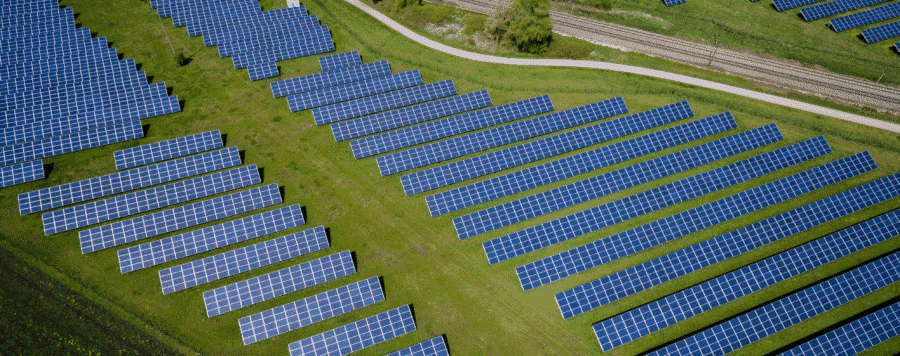
If you’re a solar installer operating in California, you know how competitive and busy the solar market has been in the last few years. With a closer eye on climate change, and a new government set to reduce emissions in any way possible, it has never been a better time for solar contractors and homeowners alike to be involved in the industry and what it has to offer in the Golden State.
Here are all the must-know solar incentives and programs offered in California for 2022 so you can stay in the loop and make sure that you’re offering your clients the best possible deal on their solar panels so that you win the bid every time.
Federal Solar Investment Tax Credit (ITC)
After many attempts to shut down this tax credit over the last few years, the ITC federal solar tax credit program is currently frozen at 26% until December 31st, 2022, while the Senate is set to look at the possibility of extending it for another 10 years in the context of the Build Back Better Act.
This means that for now, you can still use the ITC step-down to create urgency with your leads to ensure a sale before the deadline, while the hope that the Build Back Better Act passes and will ultimately be great for your business down the road.
Active Solar Energy System Property Tax Exclusion
Set to sunset on January 1st, 2025, the Active Solar Energy System Exclusion ensures that installing a solar system doesn’t raise the homeowner’s property taxes. Not only is this just a great selling point for your residential customers, but it is another solar program available with a deadline that can help your business create some urgency in the sale.
Since installing solar panels already increases the value of the home, the fact that they won’t also increase your client’s property taxes is a financial win-win for the homeowner no matter how they look at it.
Self-Generation Incentive Program (SGIP)
With solar storage options getting better and cheaper every day, this California solar incentive takes the idea of purchasing solar energy storage one step further by offering a rebate on the purchase of a solar plus battery system.
With $1 billion set aside by the California Public Utilities Commission through to 2024, the SGIP is available to customers of PG&E, SCE, SoCalGas, and SDG&E and is prioritized to people living in fire-prone areas, those with medical conditions, and people who have seen two or more utility Public Safety Power Shut-off (PSPS) events.
While the exact amount of the rebate varies based on the storage capacity, and the customer’s utility, solar installers can work with homeowners while they prepare their solar proposal to learn about their eligibility and the rebate they may qualify for, giving them a great opportunity to build trust and make it known that the installer cares about getting the homeowner the best deal on their PV system.
If you’re a member of the Enphase Installer Network, you can apply through Enphase at this link.
Disadvantaged Communities – Single-family Solar Homes (DAC-SASH)
Administrated by the non-profit GRID Alternatives, the DAC-SASH solar program was created with a $10 million per year budget ($120 million total) until 2030 and aims to help low-income homeowners with incentives to be able to participate in the “greenification” of the state.
The program aims to offer $3/watt incentives to install a solar system as well as energy efficiency training to promote jobs in green industries in these same low-income areas.
California solar incentives such as this one not only help to foster a greener state but also help to open up the solar market to even more homeowners than what may have been possible a few years ago when solar was really starting to take off in North America.
Additionally, they provide the means for more people to learn the ins and outs of installing solar PV themselves so that your solar business has a bigger pool of new installers and contractors to hire from to support much-needed industry growth.
Utility-Specific Solar Programs, Incentives, and Rebates
Since California is such a green-minded state, there is no shortage of solar incentives and rebates available from many of the utilities that operate in the region. Make sure to keep an eye on what’s currently available from the utilities that service your potential customers and the areas that you operate in to be sure that you’re always offering the best possible deal on solar power for your community.
In Closing
Nowadays, solar panels almost already sell themselves but it’s important to continuously be up to speed on ways to continue to increase your sales numbers while also providing an important service to our communities and customers. Cross-check your client’s needs against the incentives listed above to make sure that you’re putting their money to work in the best and most efficient way possible, and use these 2022 California solar incentives to your advantage to close as many deals as you can.
As your sales increase and your business grows, make sure you have a solar proposal and design software in your arsenal to support you. Book your free demo of Solargraf today to learn more about applying federal and state tax credits and incentives to your solar proposals as well as discover all the features built into the software to help you get organized, design systems, send proposals, apply for financing, order permits, shade reports and more.



 United States
United States Germany/Austria
Germany/Austria Brazil
Brazil Netherlands
Netherlands